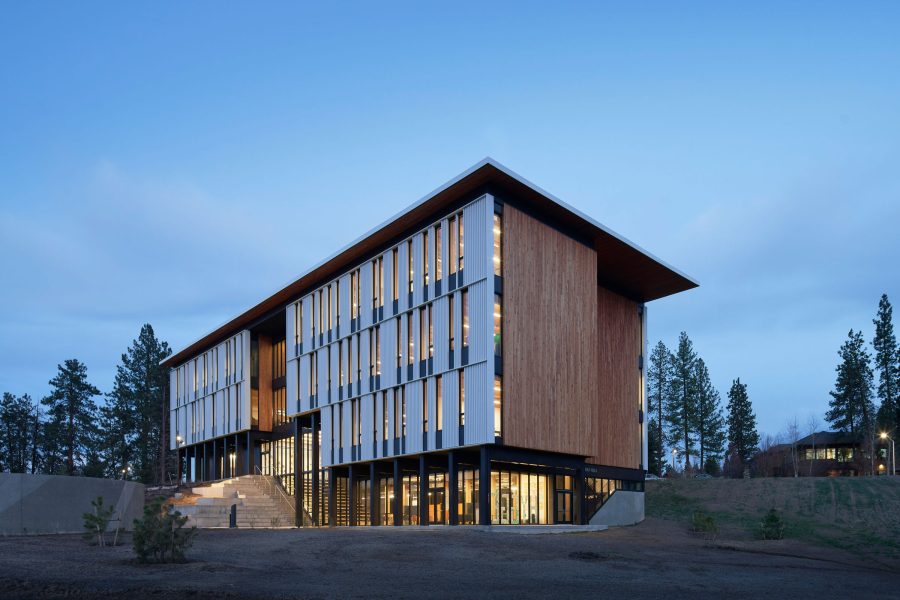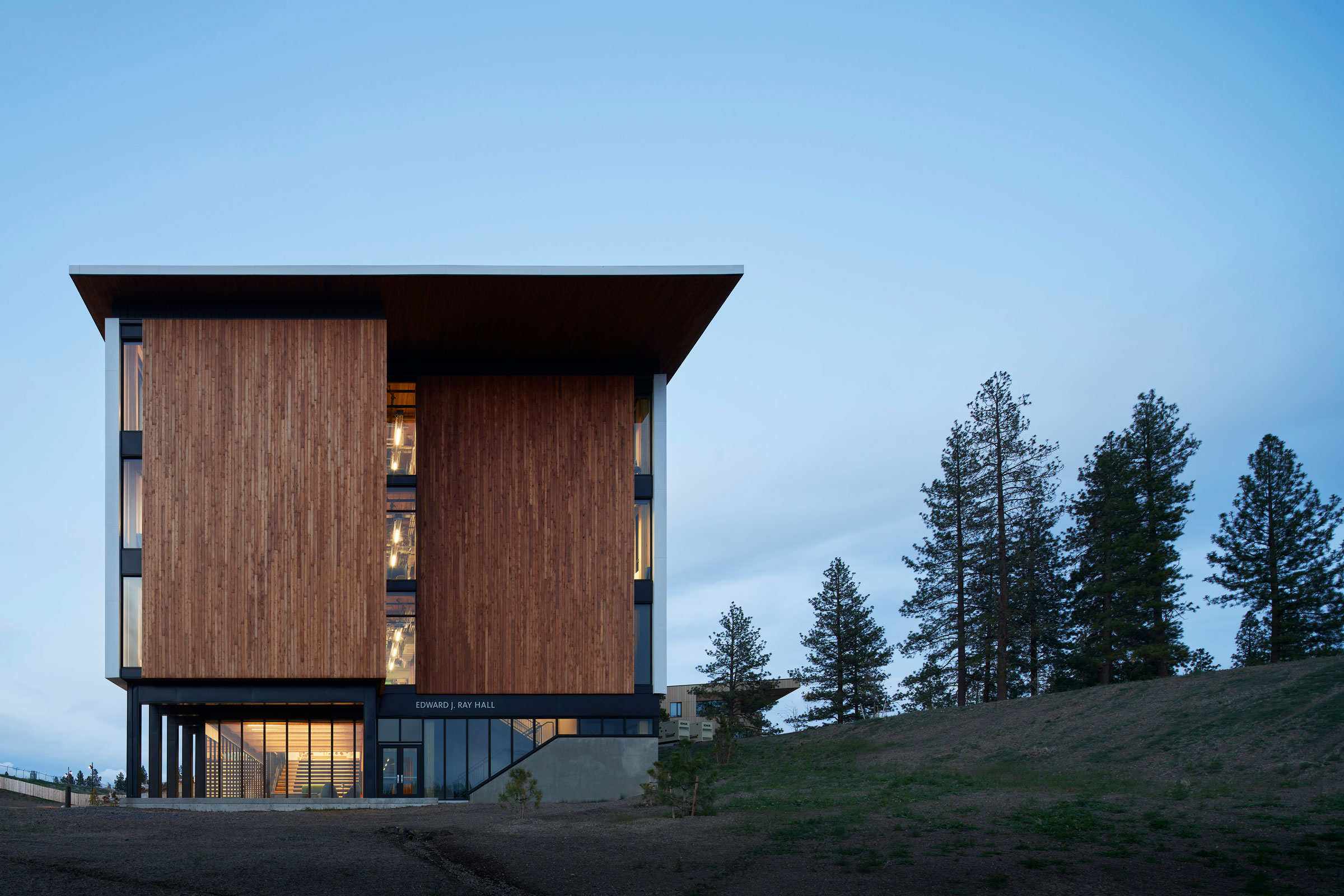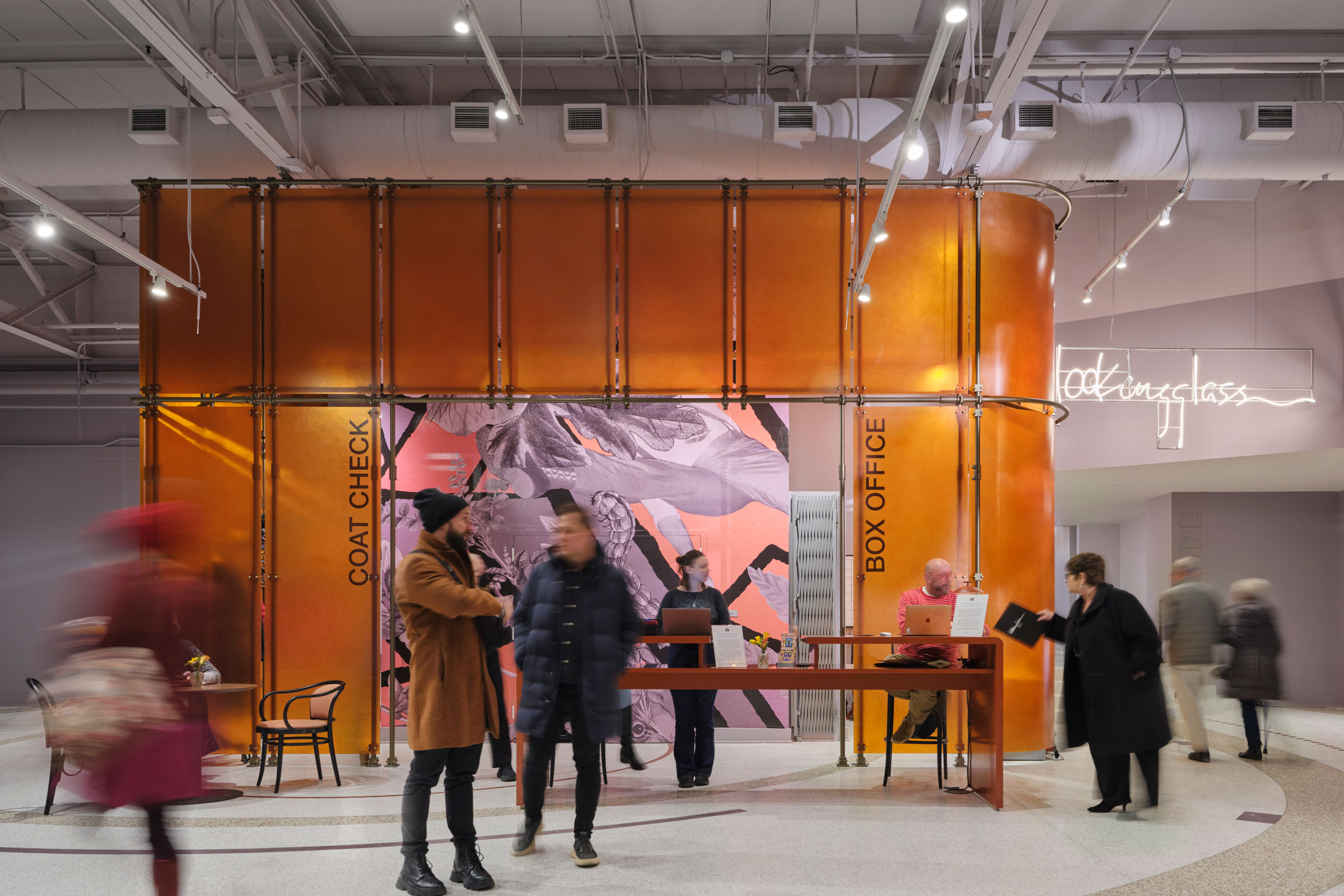Story at a glance:
- A closer look at how to turn sustainability into design opportunities by inspiring teams to move beyond checklists toward narratives that elevate both performance and experience.
- The importance of facade programming and the positive potential of mass
In my forthcoming book The Renormalization of Sustainable Design: Influencing Architecture Through Design, Science, and Mindset, I explore how buildings can work with their climate rather than against it.

“The Renormalization of Sustainable Design” is a forthcoming book by Anthony Brower. Photo courtesy of Anthony Brower
Sustainable design, in these pages, is not treated as an afterthought or a bolt-on system, but as a way of thinking embedded in every decision. Design, science, and human insight converge to shape performance, sometimes in ways we can measure and sometimes in ways we can feel. Moving between stadiums, cultural spaces, and everyday buildings, this book aims to show how intentional design can quietly transform comfort, efficiency, and experience.
Facade Programming
There’s a rhythm to how light finds a building. It arrives low and sharp from the east, fades high and hard from the south, and slants long from the west in the late hours when offices are still glowing but minds have already dimmed.
In the traditional dance of commercial building planning, the core takes center stage. It is central, balanced, and efficient. But what if we changed the choreography? What if the core instead became a shield?
An offset core may not feel glamorous, but it is no less a design gesture than a sweeping atrium or a jewel-box curtain wall. Its performance is quieter—more felt than seen, like an understudy who ends up carrying the whole play.
By placing the core on a building’s south side, we allow the space itself to turn inward toward comfort. The sun, high and insistent, is intercepted by mass. That wall can act as a thermal buffer, absorbing and holding the sun’s heat before it reaches the interior. In some designs this core becomes a kind of passive insulator, heavy with structure and low in demand.
But there is also room to explore more. When paired with a south-facing glass skin, that same mass has the potential to perform as a heat battery as a modern take on the trombe wall, where thermal lag becomes a design asset. One version shields, the other stores. Both begin with the decision to see orientation as an invitation to act, not an afterthought to dress.
This isn’t about denying the view. It is about choosing where we need it most.
The north becomes luminous, open to steady, indirect light that carries little heat but fills rooms with clarity. The east and west become tempered, meeting the low morning glare and the long afternoon sun that bypasses overhangs and overstay their welcome. They are not ignored but respected for the problems they bring, the sharp angles of daylight that can unsettle a space. The south becomes disciplined. Opaque. Purposeful. A layered wall that considers both January and July.
This mode of thinking pushes back against a well-worn phrase. “It’s too early for sustainability,” some say. As if stewardship only enters the room after the renderings are done.
But the earlier the question is asked, the more powerful the answer can be. Facade programming is not just about managing glare or harvesting light; it is about placing performance at the origin point of design decisions. Not as a constraint, but as a creative cue.
Offset cores offer a new kind of freedom. They encourage redistribution of interior programmed spaces. They follow a logic of light and load that responds to the site’s realities rather than being imposed on them.
Double offset cores, acting like bookends, invite a different kind of speculation. Can the sunniest sides also be the most stable? Can the hardest glare angles to mitigate become the most intelligent ones?
Buildings, of course, are more than objects. They are environments of use. And a well-programmed facade is not just the skin of a building. It is its temperament. Thinking about the facade as a programmable element is a way to step back and ask better questions before we commit to answers.
Orientation as Allocation

Ray Hall, designed by Cannon Design. Photo by Kevin Scott, courtesy of CannonDesign
Design begins with orientation, not as a constraint but as a way to allocate light, heat, and function. When we move the building core to the south, we are not giving up something valuable. We are choosing to place the densest, most service-heavy part of the building where the sun is strongest. In return, we open the north side to the kind of light that is steady and usable, the kind that supports attention and calm without bringing heat or glare. This is not just about where people look. It is about how the spaces feel when they are used. Design becomes a quiet act of intention, assigning each side of the building a role shaped by physics instead of habit.
The Passive Potential of Mass
Core placement offers more than spatial organization. It introduces mass where mass can do its best work. A south-facing core, heavy with structure, becomes a kind of thermal reservoir. It absorbs heat during the day and releases it slowly as temperatures fall in the evening. There is no switch to flip, no duct to install. Just concrete, quietly remembering the sun.
This passive strategy is not new. But its return to modern forms is a reminder that sustainability does not always mean embracing technology. Sometimes it means doing less, earlier on. Letting the building carry part of the load. Letting material properties take on work we usually assign to machines.
The core becomes more than vertical circulation. It becomes part of the building’s energy story, told in degrees rather than designations.
Bookending Buffer
Offsetting one core can help manage heat on a single facade. Bookending a building with two cores can begin to shape the entire thermal experience. When cores occupy both the east and west edges, the center is protected. The low morning sun and the long glare of late afternoon are kept at bay. The building gains a buffer, and with it, a better chance at balance throughout.
This strategy challenges the visual instinct to place openings everywhere. It acknowledges that some exposures ask more of us than others. It also reframes the tenor of the core not as a compromise, but as an asset. These thickened edges can house steel, stairs, systems, and services. In return they offer quiet and consistency to the spaces that matter most.
Bookending is not just a move of symmetry. It is a move of sensibility.
Facade Hierarchy
Curtain walls have become architectural shorthand for ambition. They show transparency, lightness, and reach. But they are not always doing the work we assign to them. A glass wall that faces the wrong sun becomes a liability faster than we care to admit. Glare builds. Cooling loads spike. Comfort fades.
Considering facade design as a programmable element invites us to reconsider what each side of the building is for. Not all facades need to show. Some can simply serve. If the best daylight comes from the north, that is where the transparency belongs. If the harshest heat comes from the west, then that side calls for mass, depth, or shade.
Far from the building losing its expression, this means the expression gains integrity. Design becomes a dialogue between aesthetics and atmosphere, with performance guiding form rather than following it.
Where Performance Begins
By the time most sustainability conversations happen, the building is already speaking. The massing is set. The diagrams are drawn. We know which way the walls will face. Asking them to perform better after the fact is like handing someone an umbrella after they have already stepped in from a rainstorm.
True performance begins by making thoughtful decisions earlier in the process. Core placement, facade orientation, and daylight planning are not finish-line strategies. They are starting points. They are where the real work of sustainability lives.
This is where instinct and information must meet. Designers bring vision. Data brings dimension. Together, they shape buildings that are not only striking but also self-aware. Buildings that anticipate heat rather than react to it. Buildings that stay cooler by design, not correction.
When we begin here, we stop asking materials and systems to solve problems they didn’t create.



